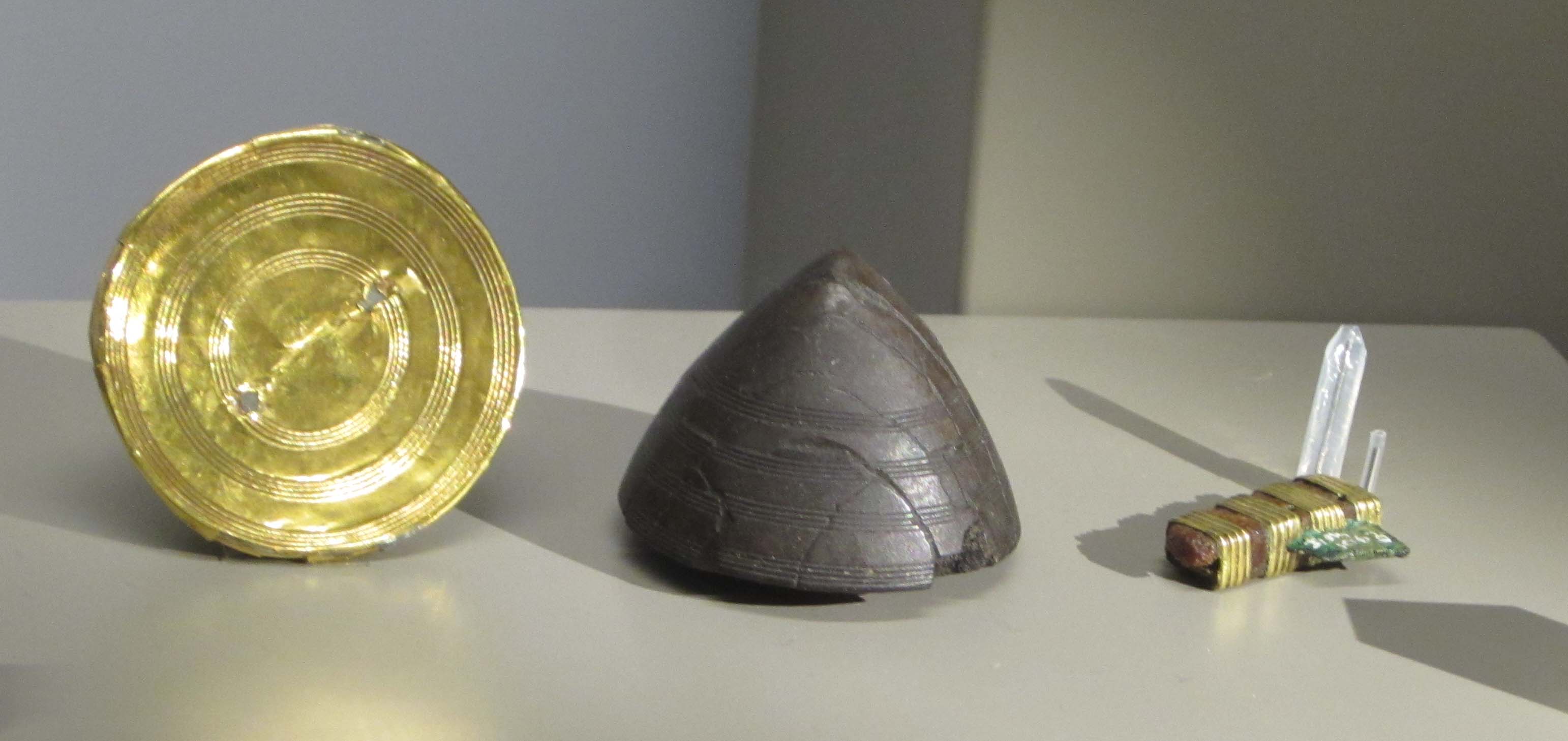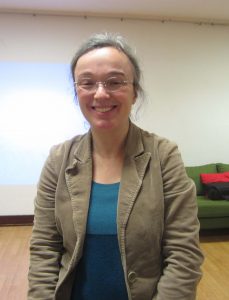

Dr. Brűck’s talk challenged the idea that Bronze Age grave goods reflect the status and prestige of a person and used the examples of the Bush Barrow and the Amesbury Archer. She suggested that we assume that all grave goods express wealth and status, but gave examples that it this is not necessarily the case, using the example of a child burial at Barrow Hills, Oxon. where 3 bronze rings were recovered. The rings would have been too large for the 5 year old child that was buried and Dr. Brűck suggested that the rings were gifts from mourners and that these gifts were a link between the living and the dead. She put forward the view that grave goods may come from different sources and, therefore, do not necessarily belong to the corpse.
Another example from Barrow Hills is an adult burial with a group of objects that suggest leather working. Close family members could have put the leather working objects into the grave and their function does not necessarily reflect that of the deceased. The presence of a Bronze Age razor suggests an adult male, but it should perhaps be regarded as a funerary object in its own right. Razors were used to prepare a corpse and for shaving the heads of the mourners. The Amesbury Archer has his objects carefully arranged around him in a sort of micro-geography of the mourners’ status.
We learnt that Beaker burials are not always individual burials, some are double ones and some have cremations and child inhumations added. There are disarticulated burials, Eg. the Boscombe Bowmen where one of the bowmen has hand bones missing. Under him are two bundles of disarticulated bones. This suggests that the burials were re-opened and bones removed and sorted, as in the Neolithic.
The fragmentation of human remains was put forward as a way of creating an heirloom that allowed relatives to keep parts of the dead for themselves. Although this idea is abhorrent to us today, it was common practice in the Bronze Age. By the Middle Bronze age cremation is the dominant practice, with few grave goods. There is evidence of the deliberate breaking of pots, which are then deposited in graves. This produces ancestral relics, which could be put in later burials.
We know little of how the dead were disposed of in the Late Bronze Age, but odd fragments of human bone are found in marginal or liminal locations, i.e. on the edge of a ringwork, or entrance to a settlement, Eg. South Hornchurch, Essex, or at the entrance to a roundhouse, as if it marks a boundary between social space. At Flag Fen near the platform and causeway, human remains have been deliberately deposited. At Sculptor’s Cave, Covesea, Moray, there are children’s mandibles deposited at the cave entrance. They may have fallen off skulls and placed in the liminal space between the outside world and the entrance to the cave.
